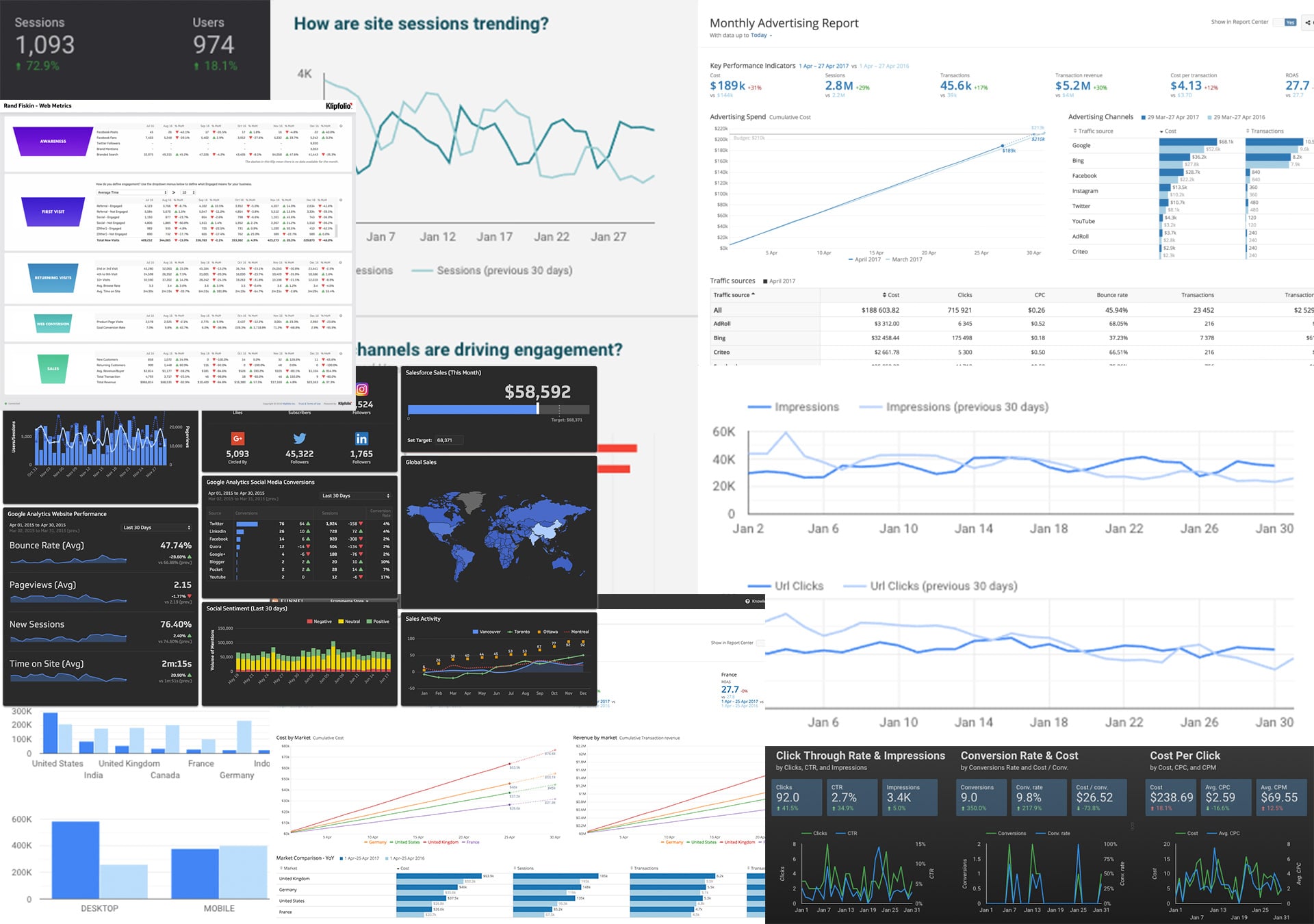Marketing Dashboarding 101

Marketing dashboards have become increasingly popular over the past few years. As data has become more and more available, many small- and medium-sized businesses have become overwhelmed by the volume of information at their fingertips. So, figuring out what matters in the moment and how to leverage it has become increasingly important.
What is a marketing dashboard?

A marketing dashboard is simply a visualization of the key performance indicators (KPIs) that matter most to your business. It is one of the best ways to take what matters, put it on one report and review it consistently. This information can come from one data source, like Google Analytics, or multiple data sources like AdRoll, CallRail, Google Ads, or MailChimp.
The best part of dashboards – they can be customized for your organization.
How would our organization use a marketing dashboard?
It really helps your organization focus on what matters most. For instance, many businesses shouldn’t really focus on the number of total website visitors they’ve received. What matters more is where they’re coming from and what they’re doing when they arrive. Pulling in Google Analytics as a data source, you can pull that data in directly so you don’t have to shuffle through everything in Analytics, but only the things that matter most.
Second, it allows focus. I personally believe that every business has one thing that matters the most in that moment. In the book Lean Analytics, this metric is referred to as the OMTM (One Metric That Matters). For a period of time, that could be sales, email signups, phone calls from a particular source, etc. Using a marketing dashboard, you can put those numbers front and center on a frequent basis without having to dig through reports from the source itself.
Last, it helps make real decisions. The goal of having all of this data at our fingertips is to be able to make rapid decisions that move the business forward. We’ve leveraged this information to tighten our marketing targets, look at poorly performing ads, or find areas of improvement in specific marketing efforts for clients. It really helps make continual improvement a little easier.
What areas of our marketing effort are best suited for dashboarding?
Well, that really depends. In my opinion, digital marketing efforts are the easiest thing to track, but offline efforts can be tracked too. This can be done by uploading spreadsheets from your offline systems or even connecting some of those systems to the web. Believe it or not, certain Analytics systems can be connected in a way that allows you track even brick and mortar register sales!
For most digital marketers, they refer to 3 types of metrics: soft, hard, and online marketing metrics.
Soft metrics are considered to be at the top of the marketing funnel. These metrics are about brand awareness, interaction, and social conversation.
Hard metrics are the metrics that help us get to our return on investment. These are weekly or monthly sales numbers, net present value of our active campaigns, and so on. Dependent on the organization, some of this requires manual work or direct integration with internal systems.
Last are online marketing metrics. These are things that tend to be all over the marketing funnel. Awareness or consideration activities like total site visits, new sessions, or traffic by source or medium – conversion related data regarding click through rates and cost per lead – and loyalty / advocacy activities like shares or mentions. If broken out, many of these items would fit under soft or hard metrics, but some do not so they’re left in this category.
What really matters is what matters most to your company.
What matters most for our organization to track?
Stop for a second and think about what is the one thing that you care about right now. Is it sales? Is it traffic from a particular marketing channel? Or, are you focused on a particular campaign? Marketing efforts ebb and flow and so should your marketing dashboard.
Some of our clients are focused solely on one marketing channel while many other clients are focused on strategies across all parts of the funnel. It really depends on what matters right now.
How do I build a marketing dashboard?
Building a dashboard takes a little bit of technical expertise and a real understanding of what matters to your organization. Then, there are a number of great tools on the market today. Tools like Klipfolio, Tableau, SmartSheet, Funnel.io, and Google Data Studio are all fantastic tools.
For us at Forum, most of our clients are small- to medium-sized businesses, so we use Google Data Studio due to both cost (it’s currently free and just out of beta) and simplicity. However, for the right clients, any of these other tools would suffice dependent on their specific need and the integrations needed to piece their data together.
Whether you tackle it on your own or with an agency like Forum, it’s certainly worth the effort.
